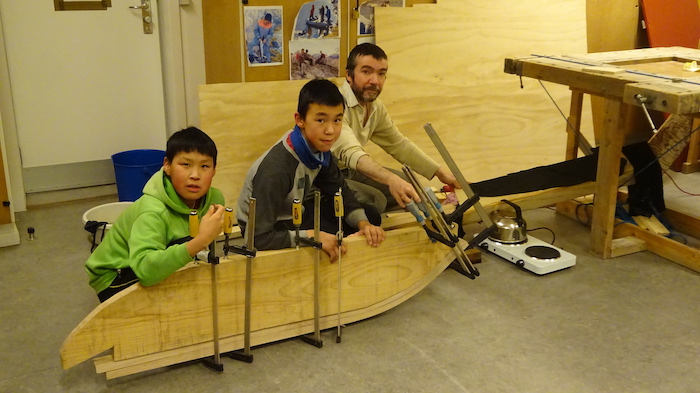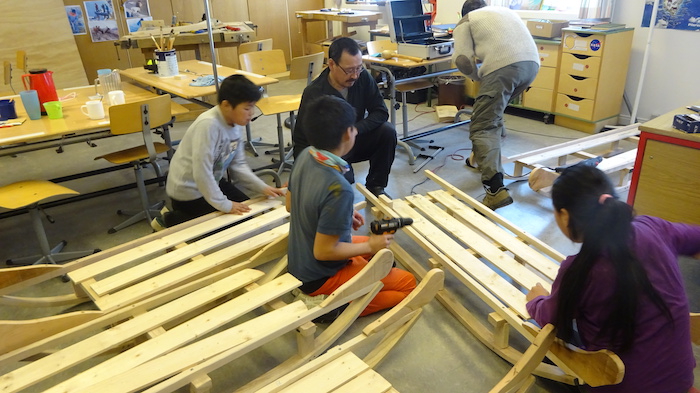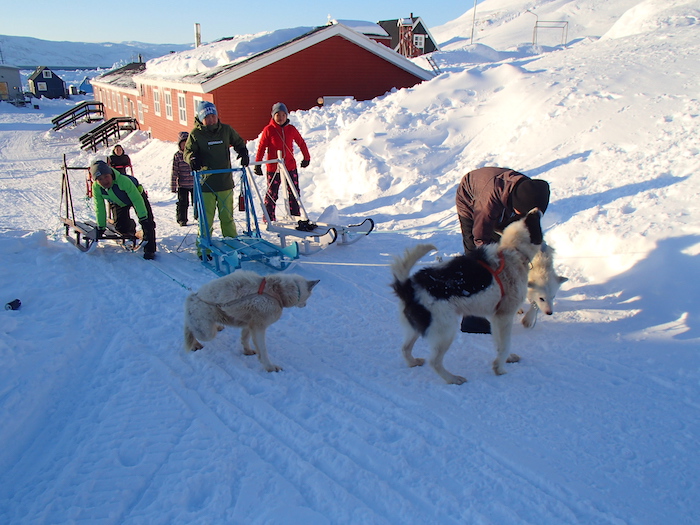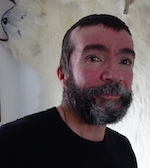By: Kamilla Oliver, teacher at Diilerilaami Alivarpi, and Max Audibert, headmaster at Diilerilaami Alivarpi.
Greenland has the Arctic's largest remaining sled dog population and a globally unique sled dog culture that is more than 4,000 years old. There is concern in Greenland about the decline in the number of dogs recorded in the past decades and how to pass on the cultural skills and knowledge of traditional dog sledging. The sled dog is disappearing with the ever more common use of snowmobiles and other changes; dogs have been moved outside of town so their noise doesn't disturb the sleep of people who have full-time jobs, making it harder on dog owners to tend and feed them.
Tiilerilaaq is a traditional Inuit settlement where fishing and hunting are practiced in summer, and dog sledging is practiced in the winter. Tiilerilaaq is positioned well into the Sermilik fjord in East Greenland and has about 70 inhabitants. Its closest neighbor, Tasiilaq—the main town of East Greenland—lies about 40 kilometers away and can be reached with a helicopter, boat, or dog sledge in winter.
The school in Tiilerilaaq provides education for children in grades 1–7. The idea of an educational project to build sledges the traditional way, with pupils' participation, was put forward by the headmaster Max Audibert. Apart from various educational benefits of such a project, our wish was to organize a dog sledging trip for pupils as part of the school's winter camp educational activity.


Work on the project started in early January 2019 and was almost exclusively done outside the teaching hours. Five pupils, in grades six and seven, were involved in the project. Initially two teachers were involved (the authors) and the work took place once to twice a week. The work proceeded from the design, to cutting and bending of wood, to working with tools, painting the sledges, and learning the skills necessary for dog sledging. For these students it was the first time in their life to work on such a long-term project, from its conception to the finished new sledges. It was also the first time they had an opportunity to try, under supervision, woodworking tools such as saws, chisels, hammers, drills, and electric screwdrivers.

Apart from learning the art of making a sledge from scratch, the main educational value of the project was also to instill in the young generation the value of consistent orderly work, as well as team work. Since we were building five sledges at the same time, we often had to work together on one sledge and try to keep the progress of all sledges at the same stage of completion. To help the children stay motivated, we involved local hunters in the project, who helped in various stages with the woodwork. They also recounted many interesting stories about their life and dog sledging. The sledges were finished in March and the pupils painted them in bright colors of their choice. To celebrate the successful completion of the project, we invited their parents for the occasion and each pupil received a special diploma.

The final phase of the project was using the sledges for a school trip to a hut about 10 km away, stay there overnight, and return to the village. Pupils used their new sledges, each as a musher with one or two dogs. Those children whose parents didn't own any dogs could borrow the dogs of the headmaster. For this part of the project, it was essential to teach the pupils how to put a harness on the dog and how to behave when dog sledging.

The round trip to the hut was a success. Everybody enjoyed the trip and it was a lot of fun, despite some surprises in weather. We also used this project to emphasize the importance of good care for the sled dogs in our village and to encourage in our pupils pride about their heritage and culture. The fate of the Greenlandic sled dog will ultimately be in the power of children of today.
The project was funded by the Kommune Sermersooq, which supported a portion of the teaching costs. Marion Löcker of the "Robin Hood" Animal Welfare Society in Austria generously donated funds that were used to cover the cost of materials and a small monetary incentive for the local hunters.
It is our desire to facilitate similar projects in other schools in Greenland, for example, by making a brochure detailing the process of sledge making. Of paramount importance to the success of this undertaking is adequate funding, as well as involvement of dedicated teachers. Traditional knowledge in communities is on the decline, so it is encouraging to see pupils working with their hands to make something tangible that they can use.
For more information, please see Kamilli Olivier's website, Shades of Snow or visit her on Instagram. Or, for questions, contact the authors by email, Kamilla Oliver (olikamilla [at] gmail.com) and Max Audibert (maxitinit [at] gmail.com).
About the Authors
 Kamilla Oliver is a teacher at Diilerilaami Alivarpi. Born in Poland, she completed a PhD in physics and worked in academia as a lecturer and researcher for ten years, and later in nuclear industry as physicist. Since 2016 she has been working as freelancer in adventure tourism, guiding and ski industry.
Kamilla Oliver is a teacher at Diilerilaami Alivarpi. Born in Poland, she completed a PhD in physics and worked in academia as a lecturer and researcher for ten years, and later in nuclear industry as physicist. Since 2016 she has been working as freelancer in adventure tourism, guiding and ski industry.
 Max Audibert – headmaster at Diilerilaami Alivarpi. Originally from France, he moved to East Greenland at the age of twenty and became a hunter. He was a hunter for ten years and afterwards worked in tourism. After completing teacher's education in Nuuk in 2008, he returned to Tiilerilaaq as the school's headmaster.
Max Audibert – headmaster at Diilerilaami Alivarpi. Originally from France, he moved to East Greenland at the age of twenty and became a hunter. He was a hunter for ten years and afterwards worked in tourism. After completing teacher's education in Nuuk in 2008, he returned to Tiilerilaaq as the school's headmaster.
